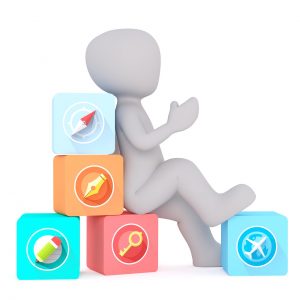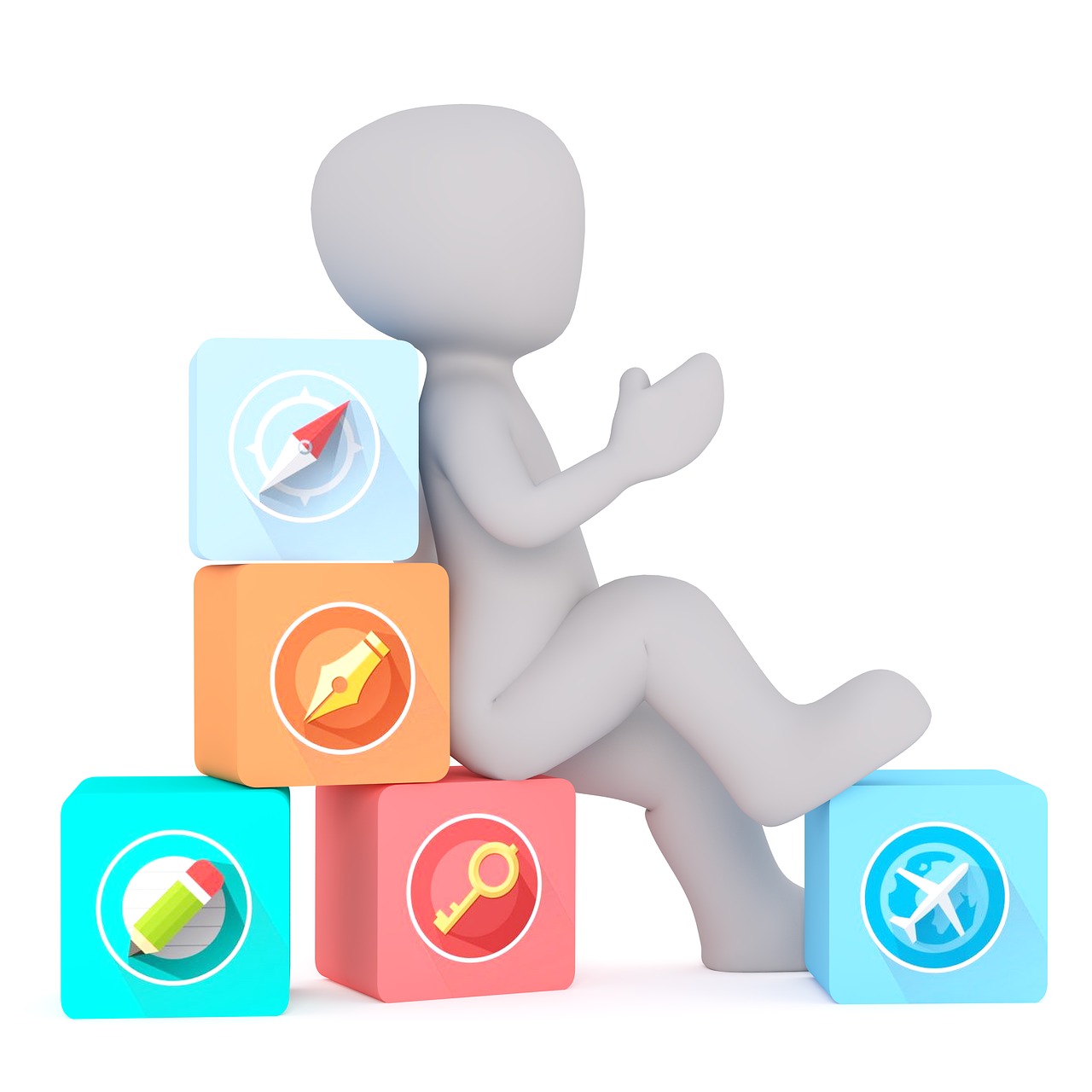Metamagazine Articles

3dman_eu / Pixabay
Project Proposal: Accessibility Explorer or XS Explorer
Accessible Europe is a project of Toegankelijk Nederland.nl – draft 1.3
Summary
In order to collect user generated accessibility data about locations (buildings and travel destinations) and use the great potential of a potentially worldwide user database. I propose an iPhone application named Accessibility Explorer or XS Explorer (as a shortened name). With the Apple iPhone you can survey and take pictures of the location directly from inside the XS Explorer application and use it to visualize specific attention area’s. The iPhone touch screen can also be used to draw a sketch of a room or situation and you could link it as comment to a question. You can even record audio comments making this useful as a real reviewing tool. The build in GPS-receiver will be used to place the location on maps and link it to pda, mobile phones (smartphones) and other navigation devices through Points Of Interest (POI’s).
About Accessible Europe
Accessible Europe’s mission is to chart the accessibility and usability of public buildings, attractions and travel destinations. The primary focus is on people with specific disability challenges like being unable to walk (and therefore use a wheelchair), being unable to see (blind or short-sighted using tools to navigate and distinguish visual information), difficulty with hearing (using special hearing devices or totally deaf, meaning alternative means of communication other than audio or voice. Other specific challenges needed adaptations or requirements in buildings are asthma (COPD), obesity, baby-care and being short.
Accessible Europe collects and shares location based accessibility information about available public facilities (for specific disabilities) in and around buildings (objects) like restaurants, libraries, hotels and museums.
Example
If you’re planning a family reunion in a group facility it is vitally important to know beforehand if your aunt in a wheelchair can sit at the dining room table and if there is a wheelchair toilet where she can go to powder her nose. If the meetingroom is on the second floor you also need to know if there is an elevator and if the doors of the elevator are big enough for a standard-size or XL-sized wheelchair.
Become an Accessibility Explorer
With the proposed multilingual iPhone application all iPhone users can become instant Accessibility Explorers or XS Explorers. The idea is adding new objects on the go. Any (public) building or destination you visit can be added. Keep in mind we’re looking for accessible locations. After registration (with username, password and email with confirmation) as an Accessibility Explorer you can use the Accessibility Explorer tool (or XS Explorer for short)
Steps:
1. Stand before the main entrance of the object/location. Press “Add new object”, the current GPS location will be stored while typing in the name of the object. Select the function of the object from the rollbar: (for example Restaurant, Cinema, Public Toilet, Hotel, Retailstore)
2. When the name and function are saved, the online database is checked if this location (300 meters) or if this name already exists in the database. If location and/or name exists you will be presented with the option to review and/or edit the existing data or add a new object. Used Object-ID’s will be stored on the iPhone. Active Explorers will be reminded to review and comment visited locations / objects.
3. Add general contact info or URL for the object (usually found on folders, brochures, businesscards found at the entrance or reception).
4. Take a picture of the main-entrance or front of the object. (picture is automatically uploaded in background, after being resized to max. 1024 pixels if needed) Select the categories-types (logo’s) you want to review or chart (default = all); Wheelchair toilet, Wheelchair, Deaf (or bad hearing), Blind (visually impaired), Asthma (COPD), Obesity (extreme overweight), and baby-care (lactation-room and/or diaper changing facility).
5. Fill in the category questions with a score +, +/-, -, unknown (default), not applicable. comment each question if needed. These scoring is based on the ITC (International Accessibility Codes which are in the contextual help on screen with examples to determine the score. Exact measurements (with / length / height in cm) (of doorways or elevators for example) can also be added if the Accessibility Explorer has a measuring-tool available for this.
6. Take pictures or draw a sketch at each critical point (entrance, corridor, leverage angle, turning circles, etc.). Registered XS Explorers also have the ability to draw or sketch on top of a new or existing picture. The original pictures are stored in the archive.
7. Fill in extra info at the notes section. Save all object info on the iPhone.
8. Review the explored object and upload it to the server. (upload with pictures can also be done later when in WiFi-range). Personal comments and notes can be added to each of the questions, categories or rooms.
9. Registered Accesibility Explorers could receive Explorer community points for each object they successfully upload. (The system keeps track of all submitted locations and feedback on the information-quality)
After internal checking of the submitted data the owner from the object will receive an automatic message:
Hi,
Your location “[Location name]” classified as “[object function]” on GPS mapped location [GPS object location] was visited by an Accessibility Explorer [XS Explorer Nickname] on [object visit date].
Please review the data online [XSexplorer object URL/Object ID]
If you feel this information is incorrect or incomplete, please register as Accessibility Explorer and edit the object.
You can also change or add more contact information, your opening hours and a description of 2000 characters.
If you score at least one + in the XS Explorer review you may add our “Visited by Accessibility Explorer” Logo and link to your homepage. If a visitor clicks the logo he will go to the review of your location on our webpage. You can choose copy and paste the code or banner from the MyXSexplorer page.
If you want more information on how to make your location more accessible please visit [Accessibility Explorer building tips URL]
Thanks for your support,
The XS Explorer team.
Find accessible object
1. press “search from current location” to check for objects nearby (scalable in “Settings” from 1 km to 50km radius). All accessibility options are selected by default but can be unclicked. The results in unchecked categories will be grey and nearest results with checked criteria with show first. Options to search for object type, name, city, province or radius from current position.
2. Select your location to display Accessibility info and contact info.
3. Click call [name location] to call the specific location.
4. Click Show on map to show the location in the maps application
5. Click Navigate to location to start your navigation application
Extra software features:
· Accessibility Warnings: A dangerous or critical notification about an object / location. (like Wikango speedcamera warnings app)
· For larger outdoor objects like theme-parks you can add sub-objects like wheelchair-toilets and continue from step 4 with a new picture.
Database entries:
XS explorer username, object GPS location(s), object name, object function, date and time of initial data collection, date and time of submission (or mutation) [also: keep mutation history], contact information Location question categories: accessibility streetwalk path (bestrating), entrance, entry level (begane grond), elevator, toilet, wheelchair toilet, bathroom, corridor, primary room, hearing , blind / sighted, obesity and baby care questions.
Applications for other mobile platforms like Windows Mobile, Blackberry and Google Android should be added as soon as the basic iPhone app is running. The accessibility database website should have a mobile / pda-version for viewing on a small screen. Primary connections to Google-maps and augmented reality applications like Layar should be implemented from the start. Being an XS Explorer using Interactive augmented reality while answering questions about the object could a cutting edge application and fun thing to do. This could give the Accessibility Database a real boost.
History
ToegankelijkNederland started in 2001 with zipcode based location information using a paper questionnaire; the answers were transcribed on the input webpages connecting and storing it to the central database. The current database was setup with the presentation in mind and is not ideal for collection of GPS based object-data.
GPS
A few years ago pda’s and smartphones became more and more advanced with build-in camera’s and GPS. XS Explorer collects and charts location based information with GPS. GPS-info is used by mapping and navigation devices. For exchange and connectivity between systems it is more logical to use GPS as a general identifier than zipcodes. It is still highly recommended to also collect the formal address and object information like name and contactinfo (such as telephonenumber, email and URL). The iPhone app is focused on easy data collection and location based retrieval.
Costs & Investment
The initial XS Explorer application for charting Accessibility should be free from the Apple App store to promote the XS Explorers community. Advertising from featured Accessible locations could pay for the community. Integration with other applications or adding other personal location based info could be sold as a paid iPhone application XS Explorer Pro. Spin-offs or combinations with desktop-syncing applications like Evernote are ways to monetize this app.
This app can easily be modified and used for adding meta-info about any GPS-location (like an external addon for MotionX GPS) or object and any questions can be added.
Option 1: Low Budget: An initial investment with a programmer-auction site like Elance.com or rentacoder.com could be around EUR 3500 for the app, database and basic CMS with a monthly cost for hosting and maintenance of around EUR 200.
Option 2: Adaptation or sponsoring by a software-development company showing high valued real useful application of their technology. This is a win-win situation since the company created a new service for a potential group of 15-35% of all people who use one or more accessibility tags for objects. A wheelchair accessibility tag usually means strollers with babies or small children will most likely also fit.
The only condition for sponsoring or Joint Venture is that usage of the accessibility-database is non-exclusive and should be open to anyone. (Also for other application builders).
A new database and community website should be developed for this Accessibility Explorer application. An API for search, import / export and object-mutation requests could be made to facilitate synchronisation and connections between other databases and applications.
Context
AccessibleEurope (ToegankelijkNederland.NL) is currently (December 2009) in the final phase of testing a new accessibility website made in the CMS Joomla. Instructed volunteers from the different disability-organisations will visit specific object locations (like restaurants, hotels, public service buildings and theatres). These volunteers will measure and test accessibility and usability by answering a basic set of questions for their specific disability in all (or most crucial) functions (and/or room-types) in an object.
Data example
Normal wheelchair accessibility for example requires a minimum passage with of 80cm including enough space for a a turning circle of the wheelchair; this is scored as +/-. For an extra large wheelchair you should have a minimum of 100cm and a larger turning circle; these entries and passages are scored +. Examples of other measured aspects are height-differences (should be minimal), toilets, (bathrooms / showers), elevators (is it big enough and can it be operated from within the wheelchair?), reception or service-desks (can it be used from within the wheelchair?), lockers (within reach), usable table height, and available exits.
I need help setting this up. If you have experience with building iPhone apps or like this project please contact me for more info.
Toine Fennis.
toine@accessibilityexplorer.eu

Be the first to comment on "Development of an iPhone-aplication: XS Explorer"